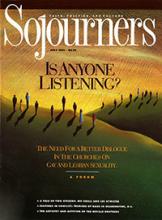On Friday nights in the mid-1950s, black New Orleans teenagers made their way from uptown and downtown to the auditorium of St. Katherine's Catholic Church. For that one night of the week, catechismal imperative was suspended and the youngsters got ready for some rousing swing-out and the more serious slow-drag grinds. It was always groovy to walk into the auditorium on those nights when the Chapaca Chawees were on stage and the quavering, lilting falsetto of Aaron Neville floated toward the entrance.
It was understood then, as it is known now, that something grand was coming from the Nevilles. The understanding became clearer when, as The Hawketts, they had the city dancing to the "Mardi Gras Mambo." The Nevilles had insinuated themselves into the unique tradition of the fabulous culture of New Orleans music, destined to bring their own blend to the gumbo.
Downtown, Fats Domino was "walkin'" toward national recognition. Allen Toussaint had set up his office in a shotgun, wood-frame house, one block east of North Rampart Street, across the street from the Caldonia Club -- where you could check out Shirley and Lee -- and a half block from "The Big Yard." Sessions in the Big Yard were led by Professor Longhair and local legendary guitarists Roy Montrell and "Papoose" -- both of whom became mainstays in the Fats Domino Band. Guitar Slim, Larry Darnell, and Earl King dominated the uptown scene, the genius of James Booker could not be contained, and the Nevilles epitomized the restless energy of Crescent City youth.
Read the Full Article
